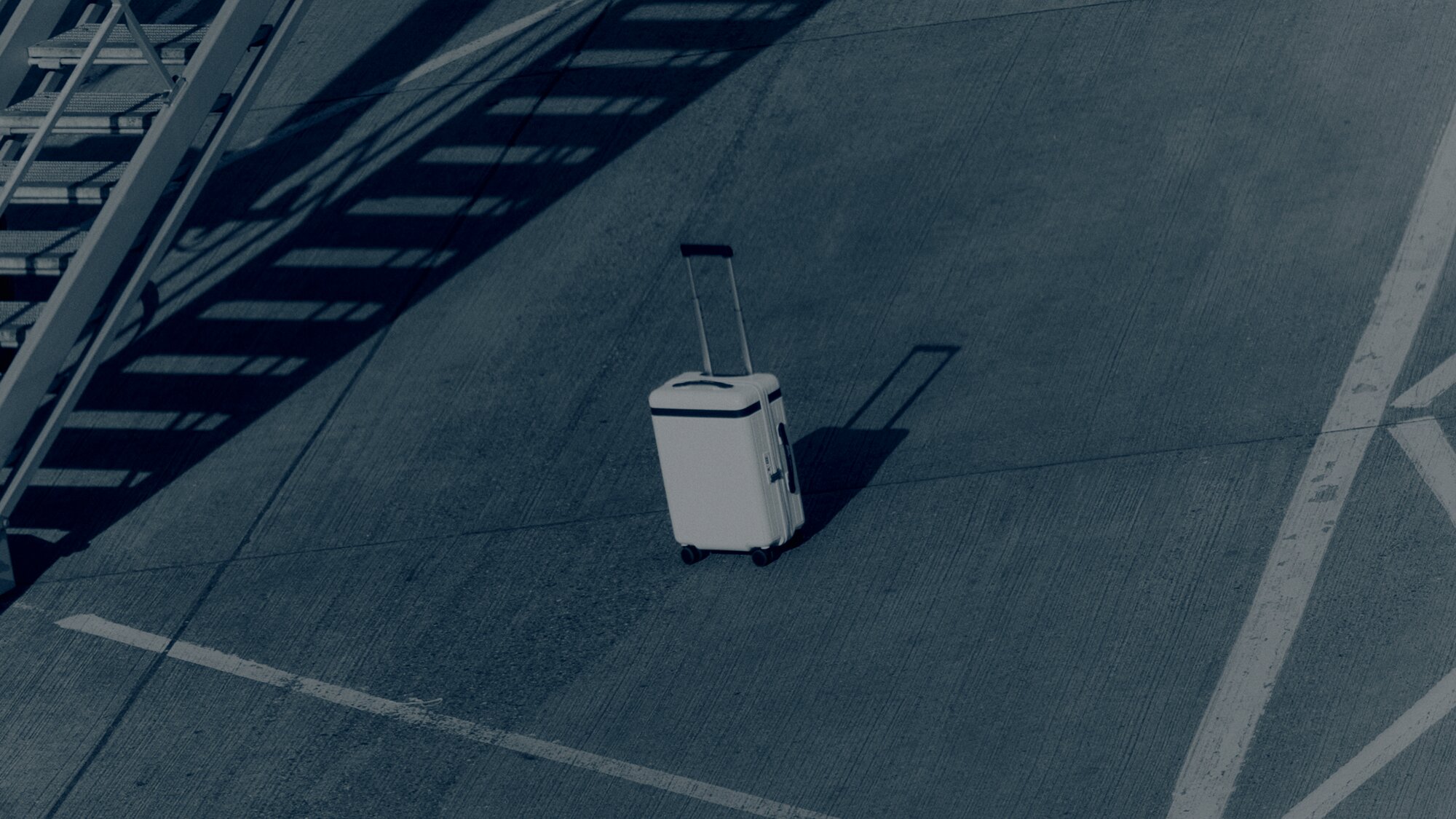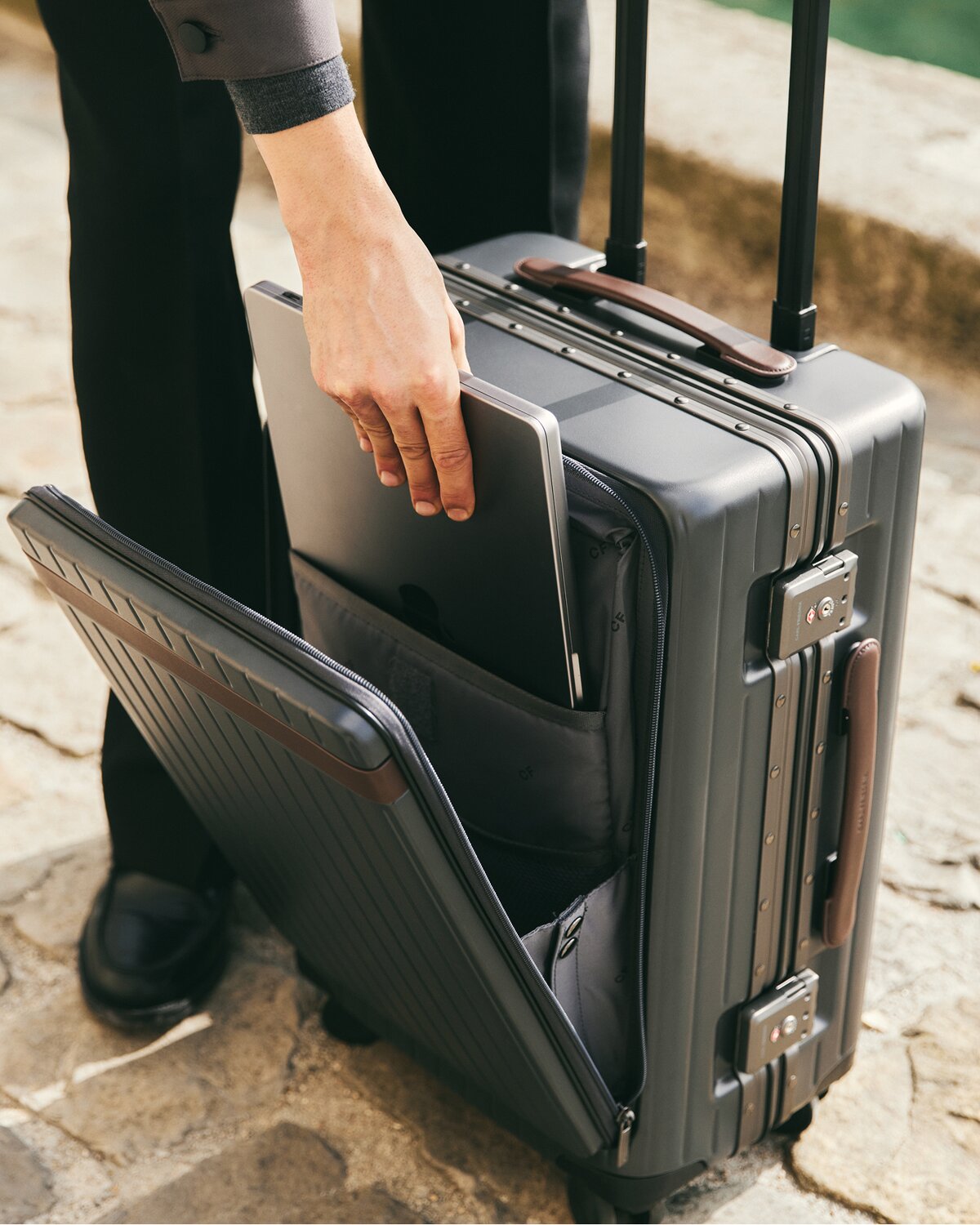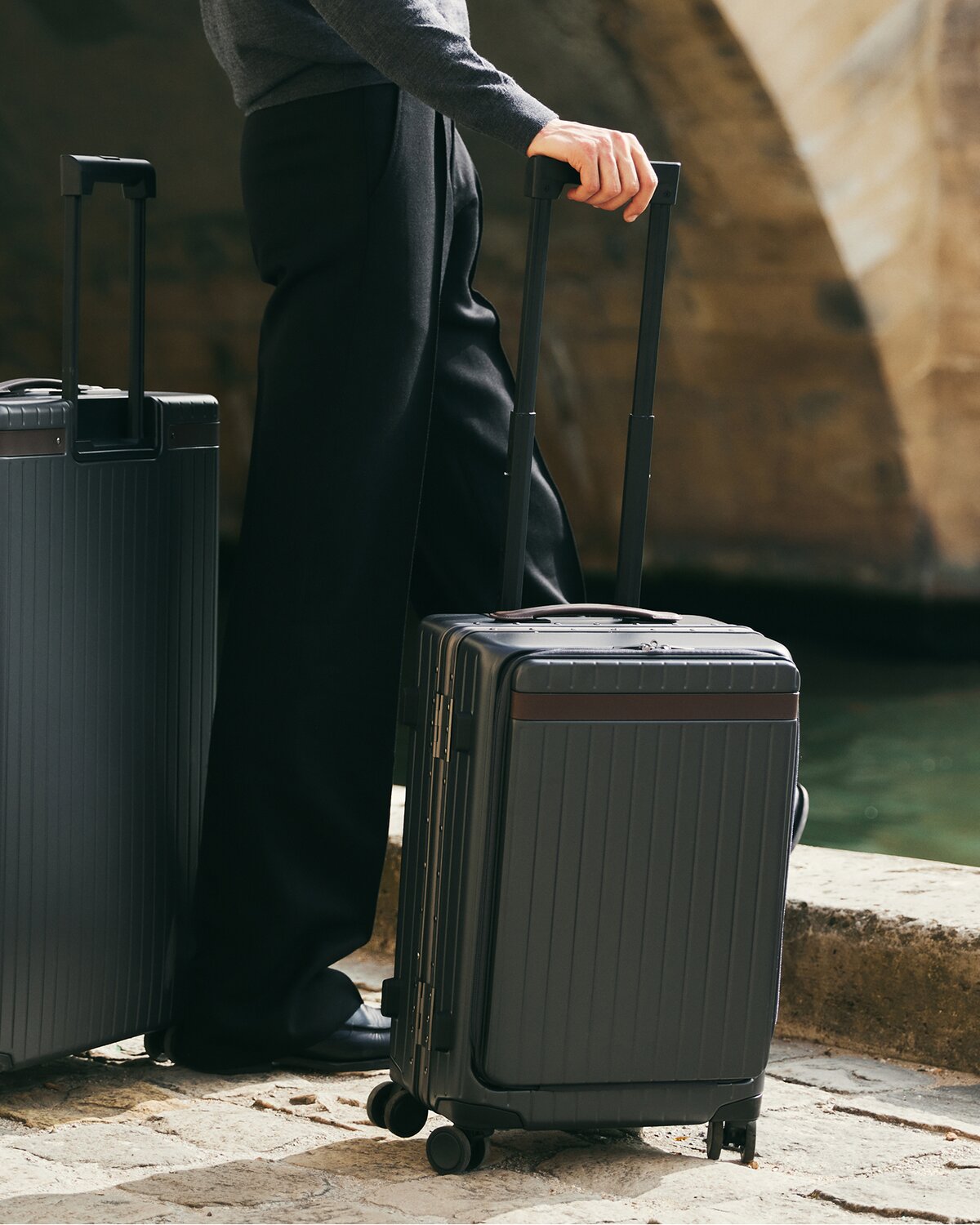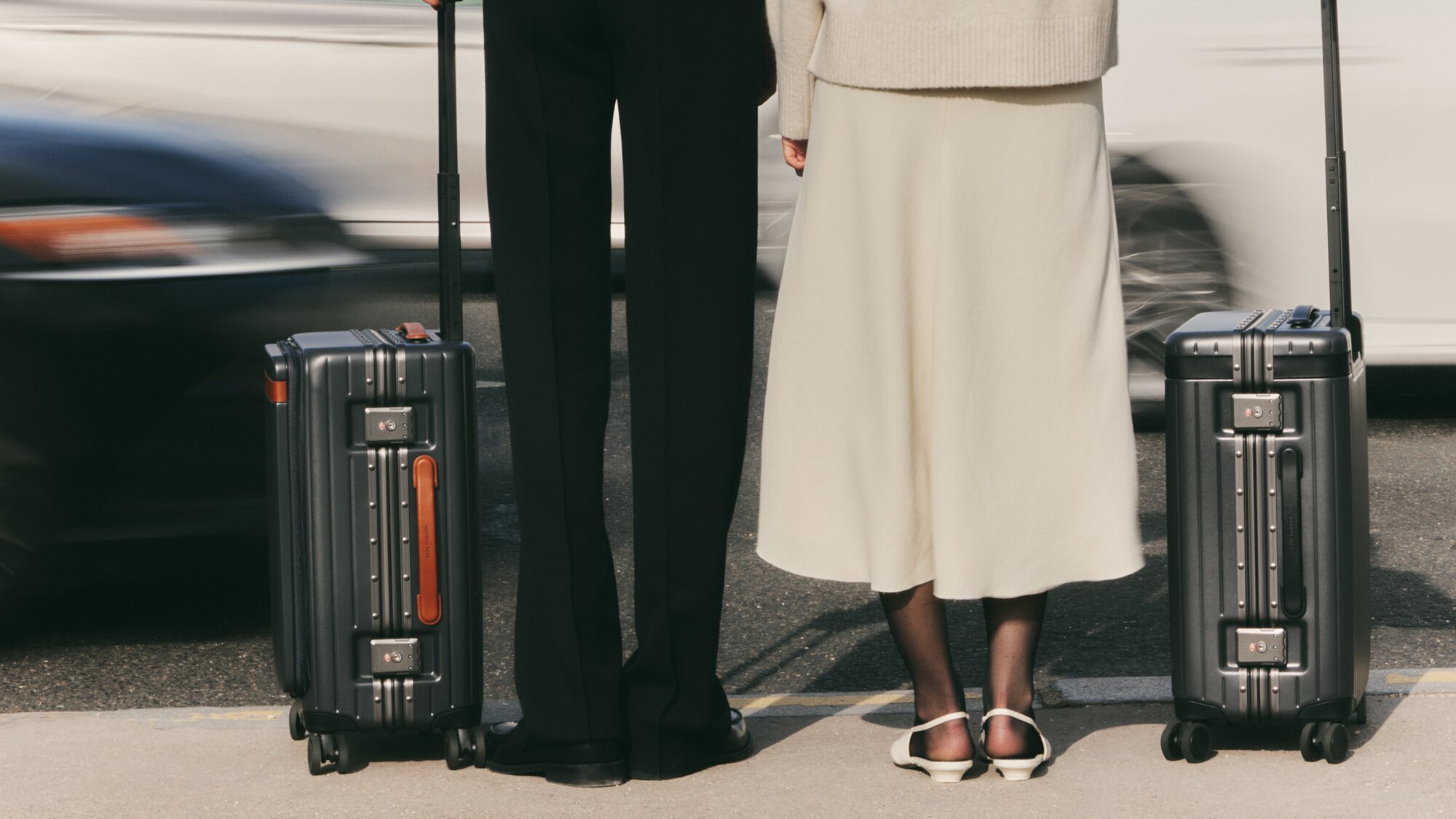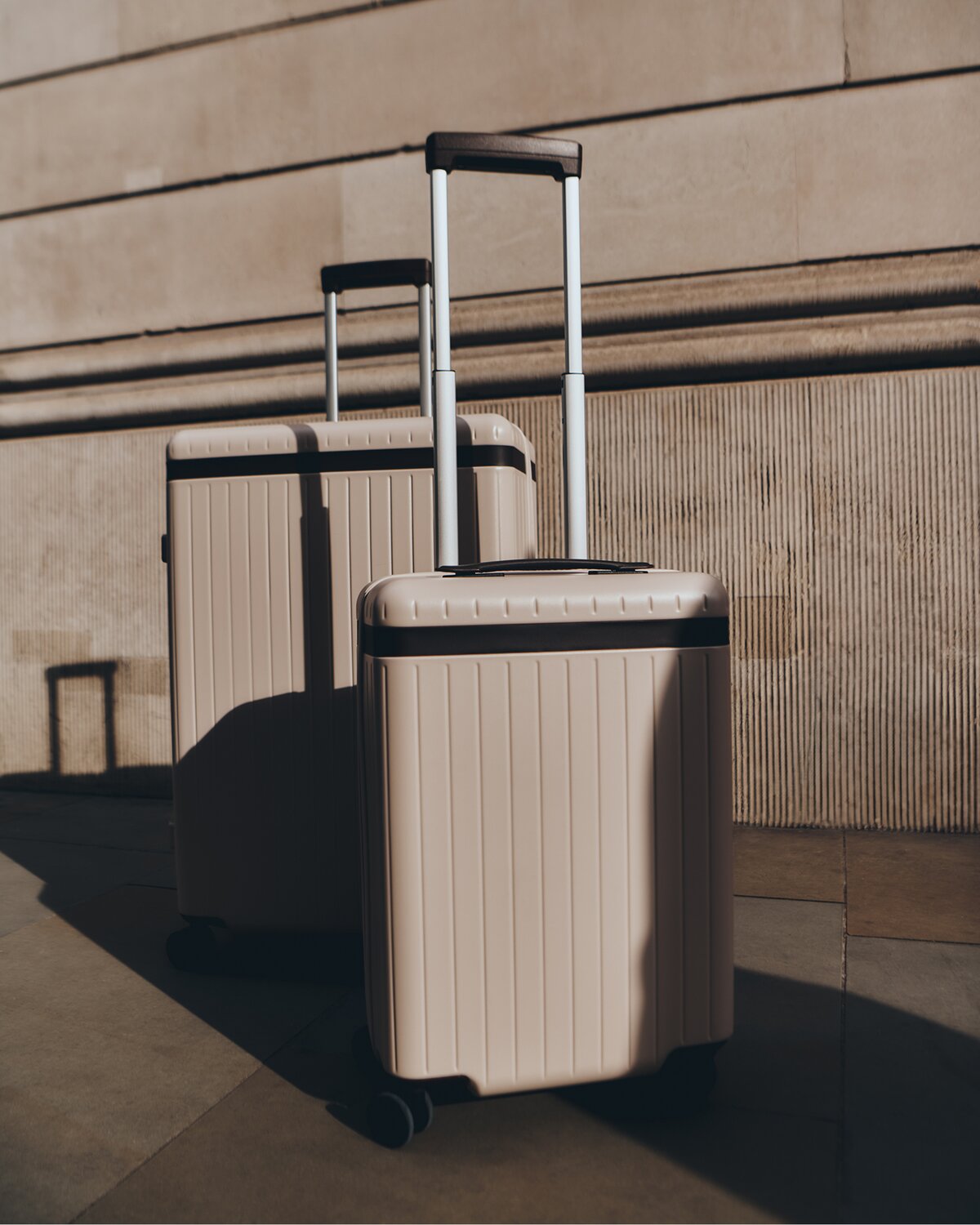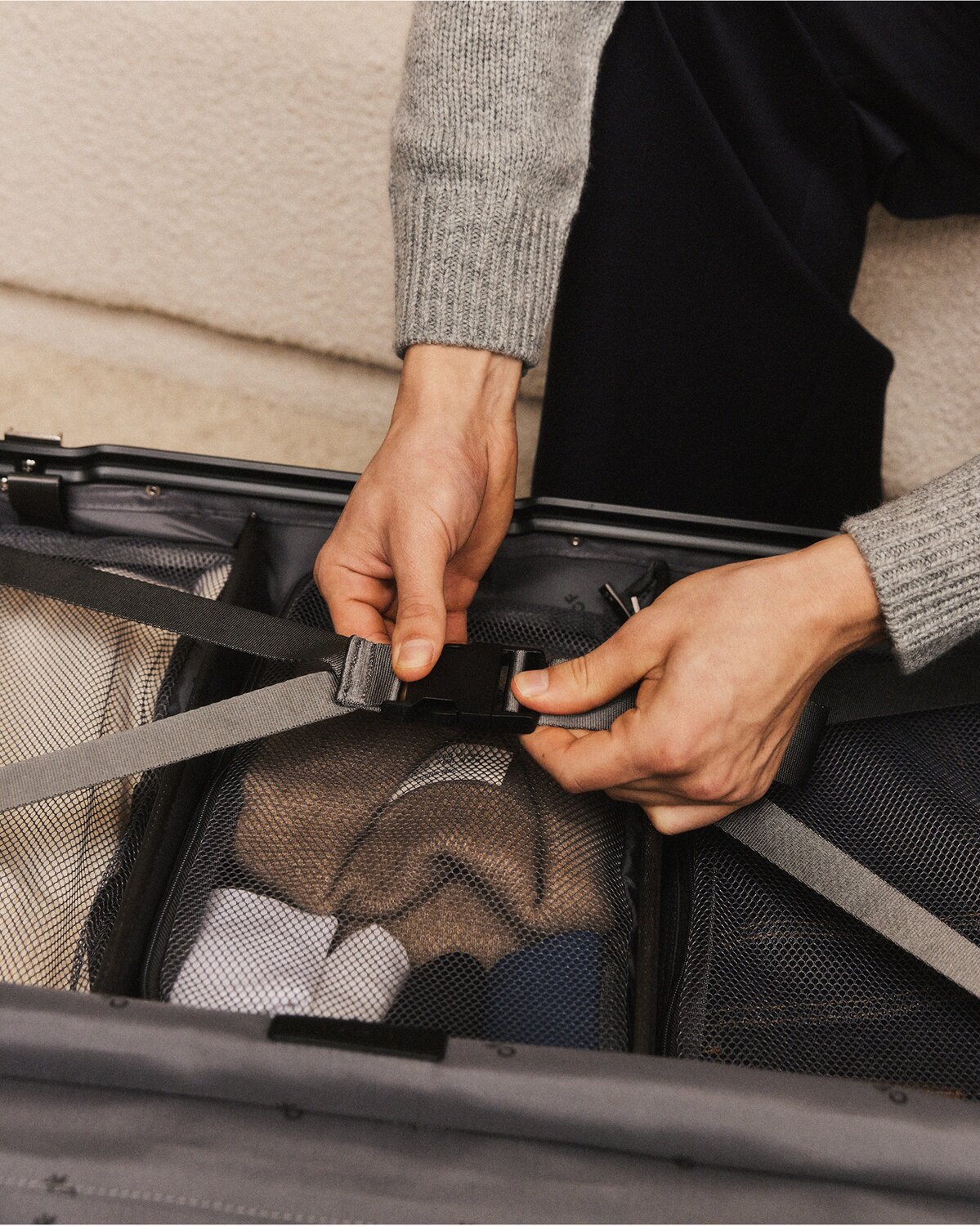Smooth European travel starts with knowing your airline’s cabin baggage rules. If your carry-on doesn’t meet the size or weight limits, you could face extra fees, delays at boarding or be forced to check it in at the gate.
This guide will help you navigate carry-on rules across Europe, covering how they differ from those in the United States, airline-specific size limits and how to choose luggage that complies with most policies. Whether you are a frequent flyer or a first-time visitor, understanding these guidelines will allow you to pack confidently and travel more efficiently.
Contents
What is the standard European carry-on luggage size?
European carry-on size vs. US size: Key differences
Airline-specific carry-on size for European airlines
Tips for choosing the best European carry-on luggage
Common mistakes travellers make with European carry-on sizes
How strictly is EU carry-on size enforced?
What happens if your luggage exceeds the European carry-on size limit?
Navigate European carry-on size rules with confidence
What is the standard European carry-on luggage size?
While individual airlines have their own rules, most follow a fairly standard cabin bag size of 55 cm x 40 cm x 20 cm. This measurement includes handles and wheels. In imperial terms, this works out at approximately 21.7 x 15.7 x 7.9 inches.
Weight limits are often enforced alongside size restrictions. Most European airlines allow between 7 and 10 kilograms per cabin bag. This contrasts with the more relaxed rules often found with American carriers. If you are planning to fly with a budget airline such as Ryanair or Wizz Air, it is best to be cautious with both weight and dimensions.
It is also important to note that some airlines distinguish between a ‘cabin bag’ and a ‘personal item’, each with different size and weight allowances. Knowing which category your bag falls into can make a big difference in what you’re allowed to bring on board.
If you are unsure how to measure your bag correctly, refer to our guide on how to measure luggage dimensions. Many travellers miscalculate by ignoring external features such as wheels or pockets, which can be enough to put a bag over the allowed limit. Use a tape measure that includes flexible fabric to get an accurate measurement of your suitcase’s outermost points, including handles and wheels.
European carry-on luggage size in inches and centimetres
To avoid confusion when converting between metric and imperial systems, use the following reference:
- European carry-on luggage size in centimetres: 55 x 40 x 20 cm
- European carry-on luggage size in inches: 21.7 x 15.7 x 7.9 inches
Keep in mind that these measurements should include wheels, handles and external pockets. European airports often have size-checking cages at gates, and exceeding limits may result in your bag being checked and charged.
European carry-on size vs. US size: Key differences
There are noticeable differences between European carry-on size regulations and those in the United States. U.S. airlines tend to allow slightly larger cabin bags, commonly up to 22 x 14 x 9 inches (approximately 56 x 36 x 23 cm). In contrast, European carriers usually require a smaller footprint.
More importantly, U.S. airlines rarely weigh carry-on bags unless boarding a smaller aircraft. European carriers, however, often enforce both dimension and weight limits. Travellers accustomed to flying domestically within the United States may find these regulations stricter than expected.
Additionally, the concept of a ‘personal item’ is treated differently on each continent. While U.S. carriers generally allow one carry-on bag plus a personal item like a laptop bag or purse, some European budget airlines may restrict carry-ons unless priority boarding or upgraded tickets are purchased.
If you want to better understand how your carry-on compares with other options, have a look at our guide on carry-on vs checked bags.
Airline-specific carry-on size for European airlines
Each airline may publish its own carry-on guidelines. The following is a general overview of accepted carry-on sizes for European airlines.
- Ryanair allows 55 x 40 x 20 cm bags, with a 10 kg weight limit, but only for those who purchase priority boarding. Others may only bring a smaller personal item.
- Wizz Air permits 55 x 40 x 23 cm bags, up to 10 kg, as part of an upgraded fare.
- Lufthansa allows 55 x 40 x 23 cm bags with a weight limit of 8 kg. A small personal item is also allowed.
- Air France accepts 55 x 35 x 25 cm carry-ons and a personal item, with a combined weight allowance of up to 12 kg depending on class.
- British Airways has one of the most generous policies, permitting bags up to 56 x 45 x 25 cm and a weight limit up to 23 kg.
- EasyJet allows carry-ons up to 56 x 45 x 25 cm, provided you have an upgraded ticket or paid for the allowance. Standard fares include only a small personal item.
- Aer Lingus allows 55 x 40 x 24 cm bags, weighing up to 10 kg.
- Norwegian Air accepts bags up to 55 x 40 x 23 cm, with a maximum weight of 10 kg on its most basic fare.
- Swiss International Air Lines allows 55 x 40 x 23 cm with a maximum weight of 8 kg.
- TAP Air Portugal accepts carry-on bags of 55 x 40 x 20 cm with a weight limit of 8 kg.
- Iberia allows 56 x 45 x 25 cm for carry-on bags with a weight limit of 10 kg.
- KLM permits carry-on luggage sized 55 x 35 x 25 cm with a combined weight limit of 12 kg for carry-on and personal items
- Austrian Airlines accepts carry-ons measuring 55 x 40 x 23 cm, with a maximum weight of 8 kg.
- Vueling allows 55 x 40 x 20 cm bags with a 10 kg weight limit, but basic fares only include a small personal item.
- TUI Airways accepts 55 x 40 x 20 cm cabin bag, up to 10 kg.
- Turkish Airlines accepts 55 x 40 x 23 cm cabin + 40 x 30 x 15 cm personal item, 8 kg cabin, 4 kg personal.
- ITA Airways allows 55 x 35 x 25 cm cabin + 40 x 30 x 15 cm personal item, up to 8 kg.
- Wizz Air accepts 40 x 30 x 20 cm small cabin bag, up to 10 kg.
Tips for choosing the best European carry-on luggage
When selecting the best carry-on luggage, start with a compact and versatile piece that fits in overhead bins across most European airlines.
Weight is also a consideration. A lighter suitcase offers more flexibility when packing. Look for materials such as polycarbonate, which balance strength and lightness.
Decide between hard vs soft luggage. Hard-shell cases provide more protection and structure, while soft-shell bags may offer slightly more give when fitting into tight spaces.
Wheels are essential for navigating busy terminals and cobbled city streets. Four-wheel spinners are typically more stable than two-wheel models. Expandable luggage can be helpful, but be cautious not to exceed the allowed dimensions when expanded.
If you are unsure which style suits your needs, explore the types of luggage best suited for different travel scenarios.
Common mistakes travellers make with European carry-on sizes
One common error is assuming that a U.S.-standard carry-on will be acceptable on a European airline. While the size difference may seem small, European carriers often measure bags precisely and are unlikely to make exceptions.
Another issue is measuring the main compartment but ignoring external features such as wheels and handles. These contribute to the overall dimensions and must be included.
Travellers also frequently overlook weight restrictions, packing their bag perfectly in size but too heavily. Many European airports have scales at the gate, and going over the weight allowance can result in penalties.
Another mistake is not accounting for souvenirs or extra items picked up during travel, which can suddenly tip your bag over the weight or size limits on the return journey. Plan for a little extra space or use compression packing cubes to keep things organised.
Lastly, people often confuse personal items with cabin luggage. If you are travelling on a basic fare with a budget airline, the carry-on bag may not be included. You can read more about this distinction in our carry-on vs personal item guide.
How strictly is EU carry-on size enforced?
The enforcement of EU carry-on size guidelines varies by airline and airport. However, budget carriers such as Ryanair and Wizz Air are known for being highly stringent. If your bag exceeds the stated dimensions or weight, it will almost certainly be checked at the gate and charged accordingly.
Legacy carriers such as Lufthansa and British Airways may offer more flexibility, especially if you are flying in a higher class or the flight is not full. Nonetheless, these airlines still retain the right to enforce rules and will do so if necessary. Security staff at airports may also intervene if your bag is too large to fit in overhead bins, even if the airline allows a certain size.
To avoid the inconvenience of last-minute gate checks or fees, always ensure your luggage fits within the limits of the airline you plan to use.
The Carry-on X
What happens if your luggage exceeds the European carry-on size limit?
Should your carry-on exceed either the size or weight limit, the airline is likely to take one of several actions:
- You may be asked to check the bag at the gate, potentially incurring a fee.
- You could be required to repack your belongings on the spot.
- In some cases, excess weight or size might mean your bag is not accepted for the flight at all.
These outcomes can lead to delays, additional costs and inconvenience. To avoid them, stay within the European carry-on size limit and confirm your airline’s policy before you travel.
Navigate European carry-on size rules with confidence
To avoid last-minute problems at the gate, be proactive about understanding European carry-on size policies. With the right suitcase and accurate information, you can travel across Europe confidently and avoid any unpleasant surprises, leaving you free to enjoy your journey to the fullest.
What is the standard European carry-on luggage size?
How is the European carry-on size different from the U.S. standard?
Which Carl Friedrik carry-on works best for European airlines?
What happens if my carry-on is too big or heavy in Europe?
The latest product news and travel guides? It's just a sign-up away.
